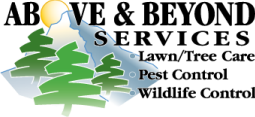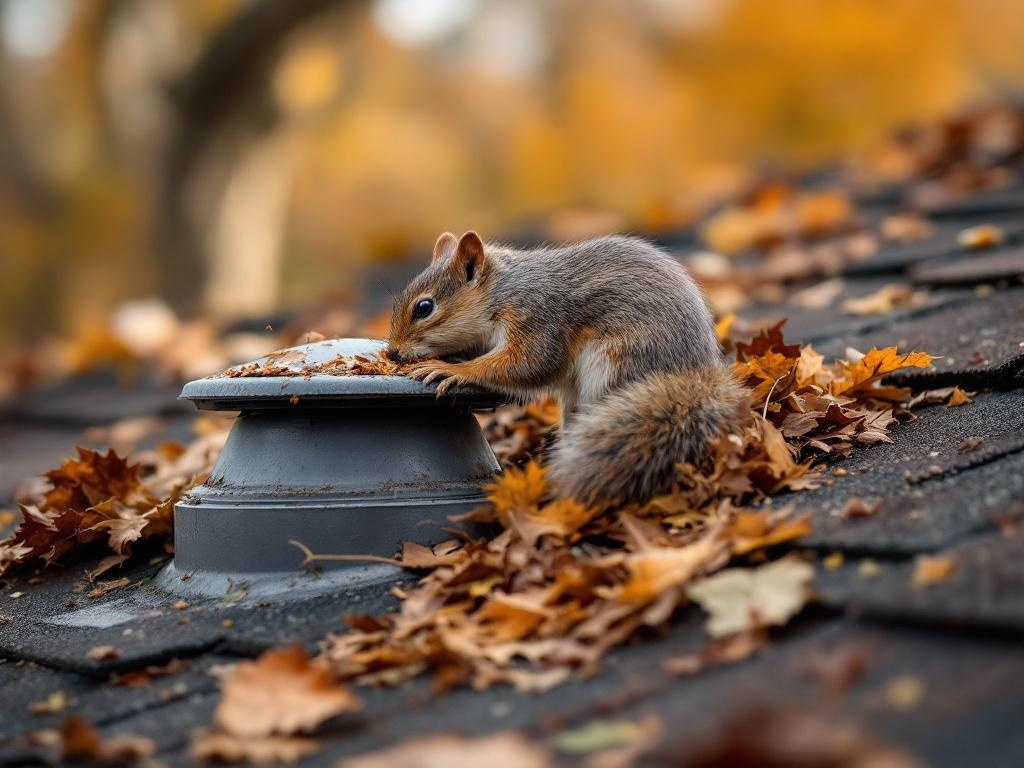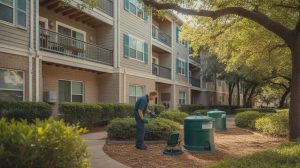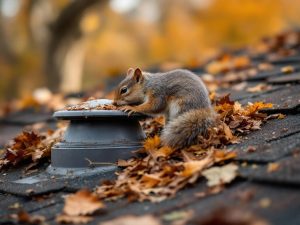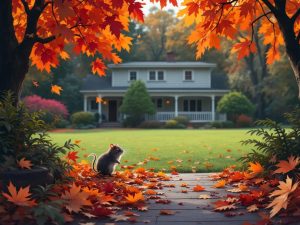Wildlife roof damage in Englewood is becoming a huge issue. In Englewood, Colorado your roof faces threats from various wildlife. Squirrels and raccoons often access roofs through nearby trees, creating entry points for further issues. It’s essential to recognize the signs of these infestations before they lead to costly damage. But what specific damage can these animals cause, and how can you protect your roof effectively?
What to Expect:
- Birds may block drainage systems with nests, causing moisture issues and roof damage.
- Squirrels and raccoons can chew through materials, creating access points and leading to insulation damage.
- Raccoons often tear off shingles and enter vents, resulting in leaks and attracting other pests.
- Regular maintenance and inspections are vital to prevent wildlife from causing extensive roof damage.
Common Wildlife Culprits in Englewood
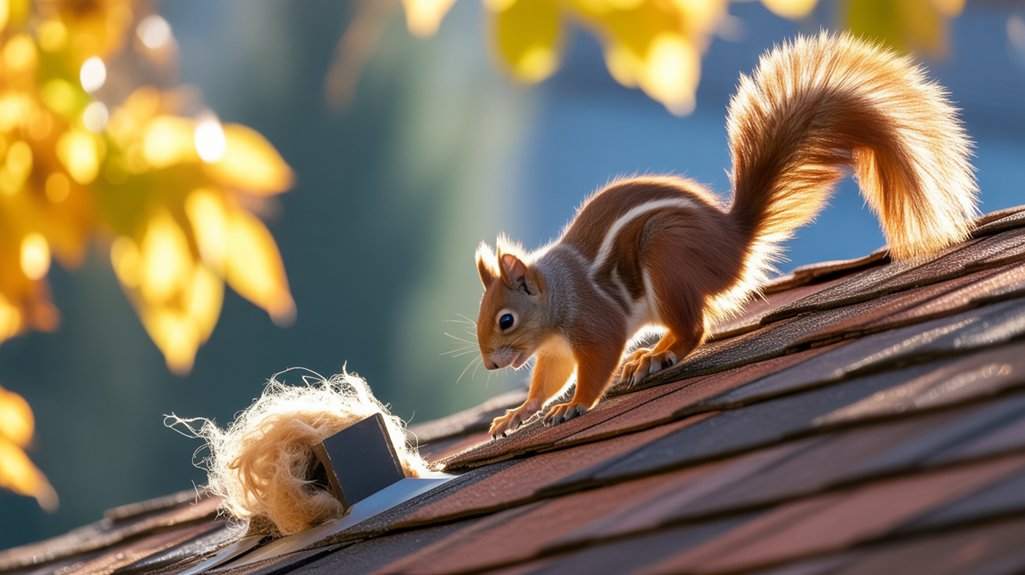
Wildlife roof damage In Englewood is often cause by birds. The birds often choose rooftops for nesting, especially in the warmer months. While their nests may seem harmless, they can block drainage systems and create moisture issues, leading to mold and structural damage.
Squirrels, raccoons and other invasive critters can find their way to your roof.
If you notice any evidence of pests, it’s essential to take preventive measures. By being proactive, you can protect your roof from these common wildlife threats and ensure it remains in good condition for years to come.
How Animals Gain Access to Your Roof
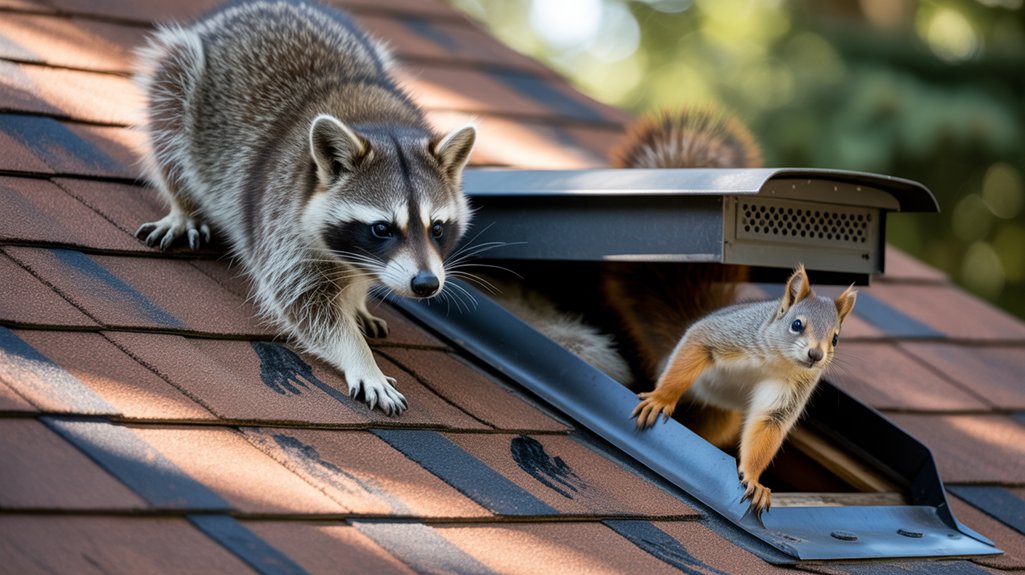
Wildlife can easily find their way onto your roof, and understanding how they do it’s key to prevention. Many animals, like squirrels and raccoons, are skilled climbers that use nearby trees, utility poles, or even your home’s exterior to gain roof entry.
They’re often attracted to your roof by the scent of food or the warmth it provides. Additionally, animal behavior plays a significant role; creatures like birds and bats may nest in eaves or ventilation systems, while others might chew through materials to create access points.
While you might not be able to prevent them climbing up, you can take control of the damage!
To keep your roof safe, regularly inspect your property for overhanging branches or gaps, and take proactive measures to deter these curious critters before they cause damage.
Signs of Wildlife Roof Damage in Englewood
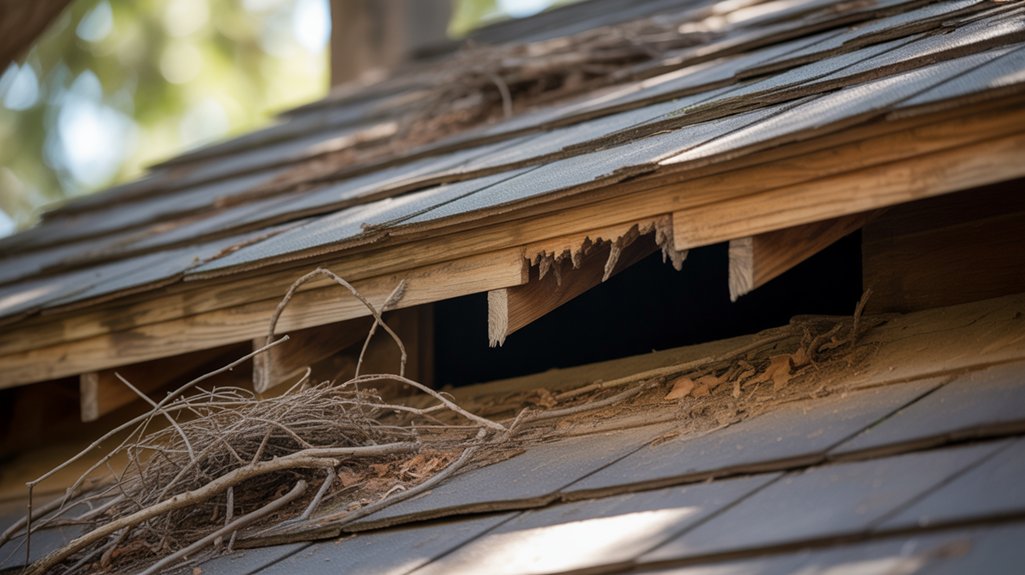
It’s good to look for signs of wildlife roof damage in Englewood. If you notice unusual noises from your attic or see droppings around your property, it might be time to investigate for signs of wildlife infestation.
These infestation indicators can help you identify if critters are making your home their own. Look for:
- Chewed wires or insulation that suggest gnawing animals.
- Nests made of shredded materials in hidden corners or attics.
- Tracks or paw prints around your roofline or entrances.
- Animal droppings, which can vary in size and shape depending on the species.
Raccoons:
Damage Caused by Raccoons & Squirrels:
| Raccoon & Squirrel Behavior | Impact on Roof |
|---|---|
| Tearing shingles | Creates leaks |
| Entering vents | Causes insulation damage |
| Nesting in attic spaces | Attracts pests, increases wear |
If you notice signs of raccoon or squirrel activity, such as droppings or noise at night, it’s crucial to act quickly. Addressing these issues early can save you from extensive roof repair down the line.
The Impact of Raccoons & Squirrels on Shingles
While you may think that raccoons and squirrels are harmless, their antics can lead to significant damage to your shingles. Their playful squirrel behavior often involves chewing and scratching, which can create:
- Deep gouges in the shingle surface
- Exposed underlayment vulnerable to leaks
- Nesting materials trapped beneath shingles
- Loose or displaced shingles that require repair
These activities can result in costly shingle repair needs, as damaged shingles won’t protect your roof effectively.
It’s essential to keep an eye on your roof to prevent these mischievous creatures from causing serious problems. By understanding how squirrels and raccoons interact with your shingles, you can take steps to minimize the potential damage and maintain the integrity of your roof for years to come.
Preventative Measures to Protect Your Roof
To safeguard your roof from wildlife damage, proactive measures are vital.
Regular roof maintenance is essential; inspect your roof for damaged shingles or loose materials that could attract animals. Keep gutters clean to prevent debris buildup, which can serve as a nesting site.
Consider installing animal deterrents like spikes or netting to discourage birds and squirrels from accessing your roof.
Trim overhanging branches to reduce easy access points for wildlife. Additionally, sealing any gaps or holes in your eaves and vents will help keep animals out.
When to Call a Professional for Help
If you notice signs of wildlife damage, such as chewed wires, nesting materials, or droppings on your roof, it’s time to call a professional.
Ignoring these issues can lead to more significant problems, so don’t hesitate. A thorough roof inspection can reveal hidden damage that you mightn’t see.
Consider reaching out if you observe:
- Unexplained noises in your attic at night
- Signs of burrowing or gnawing around vents
- Frequent sightings of wildlife near your home
- Water leaks or stains on ceilings that could indicate roof breaches
Professional wildlife removal services can safely address these issues and help prevent further damage.
Protect your home by acting quickly when you spot these troubling signs.
Frequently Asked Questions
What Types of Roofs Are Most Vulnerable to Wildlife Damage?
When considering roof types, shingle roofs are more vulnerable to wildlife damage due to their softer materials. Metal roofs, while sturdier, can still be compromised if animals find gaps or weaknesses. Keep an eye on both!
Can Wildlife Infestations Affect My Home Insurance Policy?
Yes, wildlife infestations can affect your home insurance policy. Many providers require specific wildlife insurance or may limit policy coverage for damages caused by animals, so it’s essential to review your policy details carefully.
Are There Any Natural Repellents for Wildlife Around Roofs?
You can use natural deterrents like essential oils to keep wildlife away from your roof. Oils such as peppermint, citronella, and eucalyptus not only smell great but also effectively repel unwanted critters around your home.
How Often Should I Inspect My Roof for Wildlife Signs?
You should inspect your roof at least twice a year for wildlife damage signs. Regular roof inspection frequency helps catch issues early, preventing costly repairs and ensuring your home stays safe from unwanted animal intrusions.
What Should I Do if I See Wildlife on My Roof?
If you see wildlife on your roof, act quickly. Start with wildlife identification to determine the species, then contact a professional for safe removal and schedule roof maintenance to prevent future infestations and damage.
For homeowners seeking a proactive, year-round approach to safeguarding their property, we offer a comprehensive resource detailing Seasonal Pest Control in Centennial: A Complete Homeowner’s Guide.
In Closing
In Englewood, protecting your roof from wildlife is essential. By staying vigilant and recognizing the signs of infestations, you can prevent significant damage from animals like raccoons and squirrels. Regular inspections and maintenance make a big difference in keeping your roof secure. If you notice signs of wildlife activity or if the damage is beyond your control, don’t hesitate to call a professional for help. Your roof deserves the best care to ensure its longevity.
It is crucial for property owners to be aware of their legal obligations and best practices for maintaining a pest-free rental property under general landlord-tenant guidelines.
